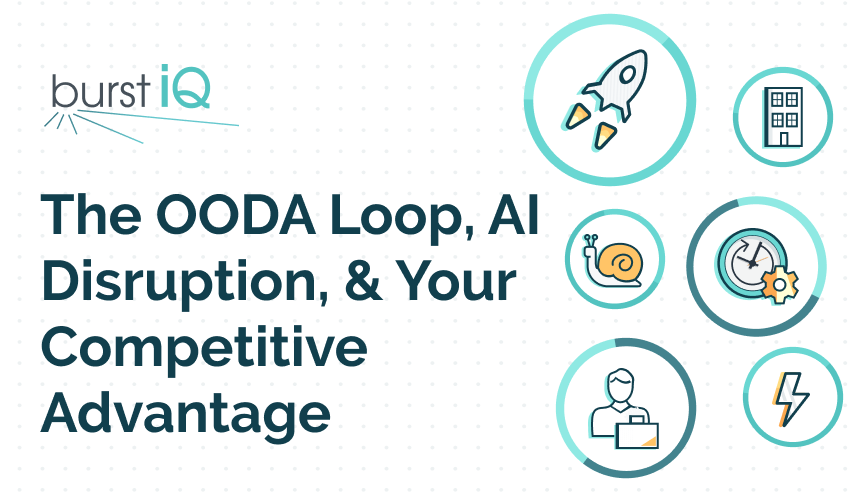Data Governance Policies
Data Governance Policies
Introduction to Data Governance Policies
Introduction to Data Governance Policies
Data governance policies are formal rules and guidelines that dictate how an organization collects, manages, secures, and uses its data.
They establish the foundation for consistency, accountability, and trust in data handling across every department and business function.
Beyond mere documentation, these policies serve as critical risk management tools. They help organizations maintain regulatory compliance, protect sensitive information, and transform data from a potential liability into a strategic asset.
Well-crafted policies bridge the gap between high-level governance strategy and day-to-day operations, ensuring that principles translate into consistent, measurable action.
Key Components of Effective Data Governance Policies
Roles and Responsibilities
Strong governance policies begin with clarity about who does what.
They define accountability at every level—from data stewards and owners to executives and end users—eliminating ambiguity about who makes decisions, approves access, or responds to incidents.
Clear assignment of responsibilities eliminates confusion and ensures data is properly managed throughout its lifecycle.
- Data Owners are accountable for the quality and protection of data within their domain.
- Data Stewards oversee day-to-day data management, enforce standards, and support data users.
- Executives and Data Governance Committees set strategic direction and resolve escalated issues.
- End Users are expected to comply with governance policies and report anomalies.
This structure fosters transparency and ensures decisions about data access, use, and remediation are made efficiently and responsibly. For a deeper dive into data stewardship read Data Stewardship and Bridging the Gap Between Policy and Practice.
Data Classification and Ownership
Effective policies establish clear frameworks for categorizing data based on sensitivity and business value.
By distinguishing between public, internal, confidential, and restricted information, organizations can apply appropriate security controls and access restrictions proportionate to risk. Effective policies:
- Define classification levels such as Public, Internal, Confidential, and Restricted.
- Assign ownership to ensure each dataset has a responsible party for its lifecycle and security.
- Align access controls to classification levels, helping prevent unauthorized exposure or misuse.
Proper classification also aids in prioritizing security resources and applying the right protection strategies across the enterprise.
Data Quality Standards
Policies must define and enforce measurable quality benchmarks that cover:
- Accuracy – Is the data correct and free of errors?
- Completeness – Are all necessary data elements present?
- Consistency – Is the data uniform across systems and departments?
- Timeliness – Is the data current and available when needed?
- Validity – Does the data meet defined formats and criteria?
These standards ensure data remains fit for purpose and trustworthy for decision-making, analytics, and operational processes.
At BurstIQ, governance is never an afterthought. It is dynamically embedded into the LifeGraph® platform to ensure data is accurate, complete, consistent, timely, and valid across all systems and use cases.
Privacy and Security Controls
Protection measures form the core of any governance policy. This includes:
- Encryption protocols for data in transit and at rest.
- Role-based access controls (RBAC) to limit access to authorized users only.
- Data retention and deletion rules based on legal and business requirements.
- Incident response procedures to manage breaches swiftly and effectively.
- Privacy-by-design principles that embed security into data processes from the start.
Strong privacy and security measures reduce organizational risk and support customer trust. The cold hard reality is that even the biggest institutions are getting it wrong and when they do, the fallout isn’t just abstract—it hits real people.
The breach at Equifax in 2017 affected roughly 147 million Americans. Personal records were compromised, including Social Security numbers, birth dates and other sensitive identifiers.
In 2015, the Office of Personnel Management (OPM) data breach led to about 22 million federal employees, job-applicants and their associates having their most sensitive personal data taken, including SSNs, places of birth, dates of birth, addresses.
Such massive failures start with poor privacy and security controls across your data ecosystem.
Regulatory Compliance Requirements
Governance policies must address applicable regulations—whether GDPR, CCPA, HIPAA, SOX, or industry-specific mandates.
They should specify compliance obligations, documentation requirements, audit procedures, and mechanisms for staying current as regulations evolve.
With evolving global regulations, governance policies must ensure continuous alignment with legal obligations. A well-structured policy:
- Identifies applicable laws and standards such as GDPR, CCPA, HIPAA, SOX, and others.
- Outlines documentation and audit procedures to demonstrate compliance.
- Establishes change management processes for adapting to regulatory updates.
- Encourages cross-functional collaboration between legal, compliance, and data teams.
By embedding compliance into governance frameworks, organizations can avoid costly fines and reputational damage.
Developing Data Governance Policies
Assessment and Discovery
Policy development starts with understanding your current state. Map where data resides, how it flows between systems, who accesses it, and where vulnerabilities exist. This assessment reveals gaps between current practices and desired outcomes, informing policy priorities.
Stakeholder Engagement
Successful policies require input from across the organization. Include representatives from business units, IT, legal, compliance, security, and operations. This cross-functional collaboration ensures policies reflect both technical constraints and business realities, increasing adoption and effectiveness.
Clear Documentation
Write policies in plain language that non-technical audiences can understand. Avoid jargon, define key terms, use consistent formatting, and organize content logically. Include practical examples and scenarios to illustrate how policies apply in real situations. Ensure policies are easily accessible through centralized repositories or knowledge management systems.
Common Challenges and Solutions
Cultural Resistance
Employees often view governance policies as bureaucratic obstacles rather than enablers. Address this by:
- Framing policies as tools that reduce uncertainty and protect employees
- Demonstrating how governance prevents problems, not just constrains behavior
- Involving employees in policy development to build ownership
- Celebrating compliance successes and recognizing good data stewardship
Regulatory Complexity
Navigating multiple, sometimes conflicting regulations across jurisdictions requires:
- Maintaining a regulatory intelligence function or partnering with compliance experts
- Building flexible policy frameworks that accommodate regional variations
- Automating compliance tracking where possible
- Conducting regular gap analyses as regulations change
Balancing Control and Agility
Overly rigid policies can stifle innovation while too much flexibility creates risk. Strike the right balance by:
- Distinguishing between non-negotiable requirements and flexible guidelines
- Creating tiered approval processes based on risk levels
- Enabling exceptions with proper justification and oversight
- Designing policies that scale with organizational growth and change
Resource Constraints
Many organizations struggle with limited budgets and staff for governance initiatives. Maximize impact by:
- Prioritizing policies that address the highest risks first
- Leveraging automation to reduce manual compliance burdens
- Starting with pilot programs in critical areas before organization-wide rollout
- Building governance activities into existing workflows rather than creating parallel processes
Best Practices and Success Factors
Start with Executive Support: Visible leadership commitment signals that governance is a priority, not optional. Executive sponsorship provides necessary resources, removes organizational barriers, and reinforces accountability.
Keep Policies Proportionate: Avoid creating unnecessary complexity. Policies should be as simple as possible while still addressing genuine risks. Over-engineered governance creates compliance fatigue and workarounds.
Use Technology as an Enabler: Leverage data cataloging tools, access management systems, automated monitoring solutions, and policy management platforms to reduce manual effort and improve consistency. Technology should support governance, not drive it.
Measure What Matters: Define meaningful metrics that demonstrate policy effectiveness—not just activity metrics, but outcomes like reduced incidents, improved data quality scores, faster compliance audits, or increased stakeholder trust.
Build a Governance Community: Foster a network of data stewards, champions, and advocates across the organization who can provide frontline support, gather feedback, and help evolve policies over time.
Real-World Applications
Data governance is no longer a behind-the-scenes IT function—it’s a frontline strategy for achieving both compliance and competitive advantage.
Forward-thinking organizations are embedding clear governance policies into their workflows, turning regulatory requirements into opportunities for innovation and trust-building.
Here’s how various industries are applying these principles to real-world challenges.
Healthcare:
Hospital systems have successfully balanced HIPAA compliance with clinical innovation by establishing clear data governance policies for research data.
These policies define de-identification standards, consent management processes, and access controls that protect patient privacy while enabling legitimate research that advances medical knowledge.
Retail and E-commerce:
Leading retailers have used governance policies to unify customer data across channels, improving personalization while maintaining privacy compliance.
Clear policies around data collection, consent management, and third-party sharing have built consumer trust while reducing legal and reputational risk.
Technology Companies:
Fast-growing tech firms have embedded privacy-by-design principles into their product development policies, ensuring compliance considerations are addressed early in the development lifecycle rather than as afterthoughts.
This approach reduces costly redesigns and demonstrates responsible data practices to customers and regulators.
Financial Services:
Global banks have reduced regulatory risk and improved operational resilience by implementing comprehensive data lineage policies.
These policies enable institutions to track data from origin through transformation to reporting, ensuring audit trails meet regulatory scrutiny while supporting faster incident response.
When thoughtfully designed, clearly communicated, and consistently enforced, data governance policies become the operational backbone that enables organizations to use data confidently, compliantly, and competitively.
The investment in strong policies pays dividends through reduced risk, improved efficiency, and enhanced trust among stakeholders, customers, and regulators alike.

